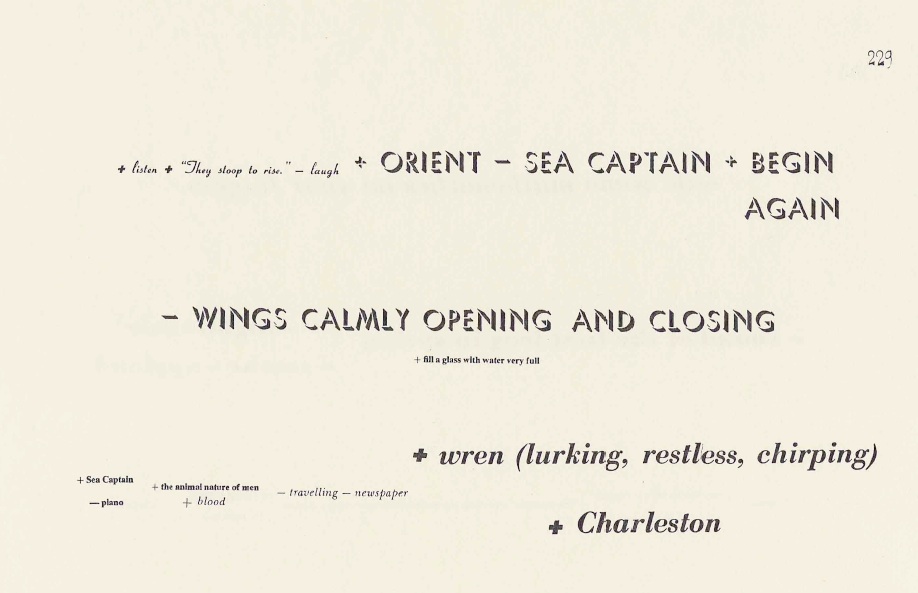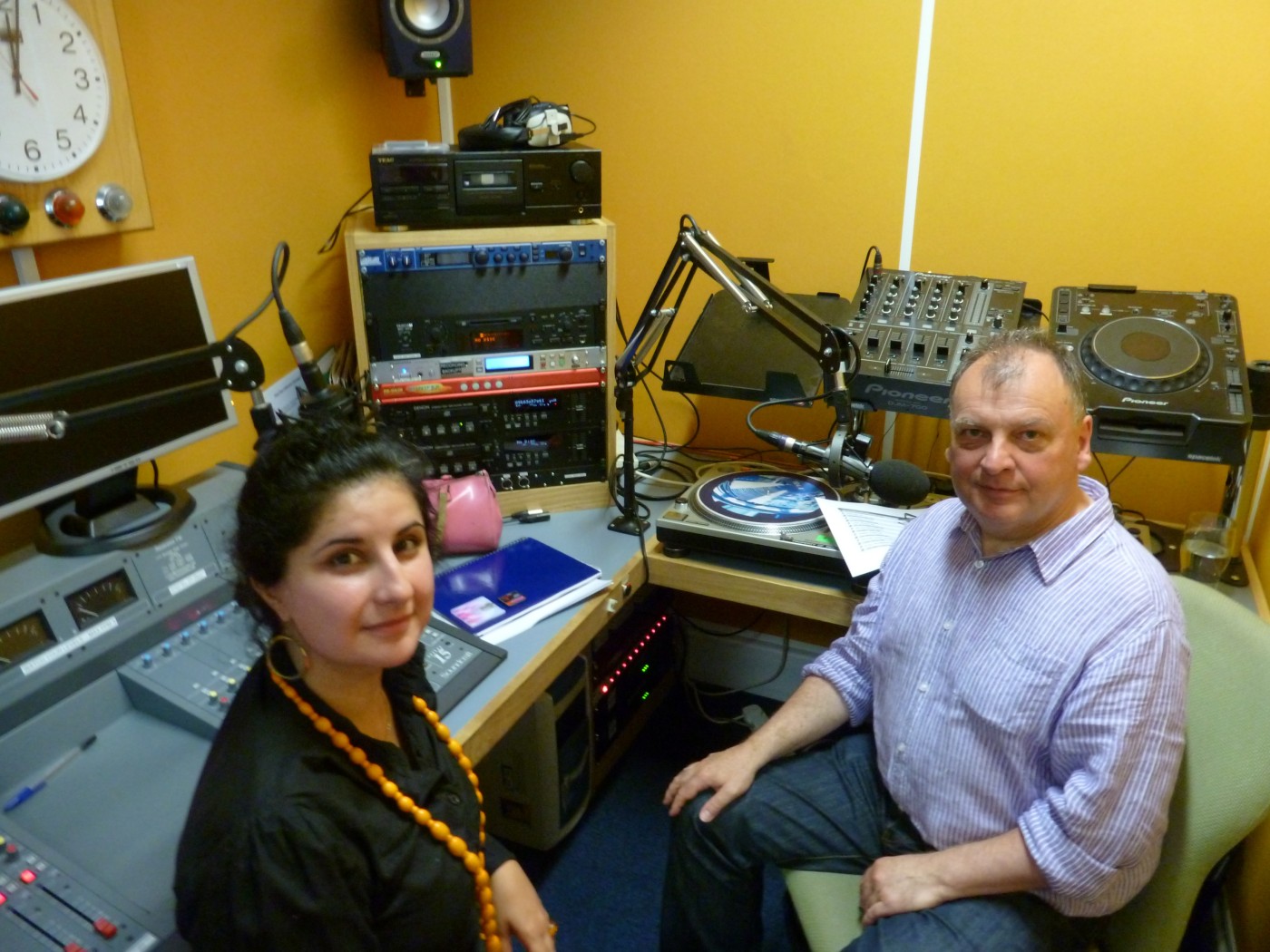
SONG BOOKS
John Cage
CD released on 5 September 2012 by Sub Rosa [SR 344]
Loré Lixenberg – vocalist
Gregory Rose – vocalist
Robert Worby – electronics
“ … to consider the Song Books as a work of art is nearly impossible. Who would dare? It resembles a brothel, doesn’t it?” [John Cage.]
Song Books is a collection of 90 Solos for Voice that John Cage composed in 1970. He employs over 50 different methods of composition and the solos are connected, or sometimes not, by a phrase that Cage took from his diaries, ‘We connect Satie with Thoreau’. Satie being the French composer Erik Satie and Thoreau being the 19th century American writer, naturalist and anarchist, Henry David Thoreau; two figures whose work had a significant impact on Cage’s work.
Any number of the solos may be performed by any number of people, in any order, selected by chance operations. Songs and theatre and electronics mix up Fluxus-like food events, amplified board games, electroacoustic voices, ‘animal heads’ and intense feedback.
This is the first ever recording of all of the Solos for Voice contained in Song Books.
All 90 Solos for Voice amount to nearly six and a half hours of music so it was decided that, for the purposes of this double CD, superimpositions would be made to layer many solos together. In the general directions to the score Cage writes, ‘Any number of solos in any order and any superimpositions may be used.’ Using chance operations, seven superimpositions have been constructed: Song Books Mix 1 through to 7. The largest includes 18 Solos for Voice and three of them include as few as five. All the individual solos shall be available soon as downloads from the Sub Rosa website [www.subrosa.net]
SONG BOOKS CD1
Track 1 – Solo for Voice No.17. [4:00] The text, about telegraph wires, is from the Journal of Henry David Thoreau. The score indicates that electronics should be used to make the voice sound like “singing wires” and also that a performance may be accompanied by a recording of “telegraph wire sounds”. Here, the recording of wires is by Alan Lamb.
Track 2 – Solo for Voice No. 20. [1:46] The vocalist follows a route, described by Cage, on a map of Concord, Massachusetts, near to where Thoreau built his cabin in the woods. This route defines a shape articulated by the vocalist. The sound of hawks (recorded by Geoff Sample) accompanies the vocalising.
Track 3 – Song Books Mix 1. [12:24] The first of seven super-mixes, or simultaneities, that layer solos together. This mix of 18 solos includes an electronically processed Schubert song, amplified food preparation and a loud game of dominoes.
Track 4 – Solo or Voice No.65. [4:36] A drawn profile of Marcel Duchamp defines a melodic shape. The electronic changes are precisely prescribed and notated. Silence surrounds the activities.
Track 5 – Solo for Voice No.4. [1:42] A different route on the map than that used on Track 2. Words, again by Thoreau, printed in varying fonts of different sizes, describe an oak tree in a meadow.
Track 6 – Song Books Mix 6. [19:14] Five Solos collided together. A long, electronically processed duet based on melodies from Satie’s opera Socrate meets a reworking of Cage’s own Aria and a song comprising a list of friends and famous people.
Track 7 – Solo for Voice No.3. [2:37] Text about a hawk from Thoreau’s journal. The vocalised contour is derived from another route on the map of Concorde, Massachusetts.
Track 8 – Solo for Voice No.11. [4:49] Showers of dots of different sizes indicate the notes to be sung. A number system, devised by Cage, 4010, 365, 3012, etc, directs the electronic processing.
Track 9 – Song Books Mix 7. [9:34] Another mix of simultaneous performances. This mix features a big solo with a text by Satie. The vocalist improvises the melody and repeats it four times, each repeat being a different length. This is recorded on stage (in this case, using a Dictaphone). The recording is played back and the singer sings along. The result of that is recorded and then all of the recordings are played back together.
Track 10 – Solo for Voice No.79. [3:30] The instructions say: ‘ … breathe as if you had lost your voice.’ The cryptic number system, from Track 8, controls the electronics again.
Track 11 – Song Books Mix 3. [14:28] ‘The best form of government is no government at all.’ This is Cage’s paraphrasing of Thoreau. Cage suggests ‘Before singing this solo, raise either the black flag of Anarchy or the flag of the Whole Earth.’ This is Solo for Voice No.35. Here it is mixed with 15 other solos which include electronic feedback, electronic grunts and a simple melody accompanied by tapping on an amplified tabletop.
SONG BOOKS CD2
Track 1 – Solo for Voice No.47. [3:13] Mozart’s Queen of the Night aria. But not as we know it. It’s cut up using chance operations and processed with electronics. What Cage calls a ‘Cheap Imitation’.
Track 2 – Solo for Voice No. 91. [7:52] An electronic song. The words are fifteen of the 36 Acrostics re and not re Duchamp by Cage, published in his book M. Music made by swallows, sacred texts and fragments from Cage’s diaries are all included. Electronic changes follow Cage’s number system.
Track 3 – Song Books Mix 5. [6:47] Ten Solos for Voice mixed using chance operations. At the beginning the writing of a postcard is amplified using contact mics. Running throughout, right to the end, is Solo for Voice No.74, based on the mesostic text written for, and using the name of, James Klosty, the photographer who provided the photographs for this CD. It was left on the windscreen of his car when he couldn’t decide where he and Carolyn Brown (principal dancer with Merce Cunningham Dance Company) should go … during sometime around 1970.
asK
Little
autO
where it wantS
To take
You
Track 4 – Solo or Voice No.5. [9:04] Tracing around a drawing of Thoreau gives the line to be sung. The electronics change “ …when moving, for instance, from hair to eyes.” The texts are mixes of letters and syllables from Thoreau’s Journal subjected to I-Ching determined chance operations.
Track 5 – Song Books Mix 4. [11:25] Five solos layered together. The longest in this mix is a simple song which is another ‘Cheap Imitation’, the melody being derived from Satie’s opera Socrate, with a text from Thoreau’s journal. Also featured: electronic humming vocals and Japanese chant.
Track 6 – Solo for Voice No.67. [2:30] The instructions say: “Use only the extreme of your vocal range: falsetto, grunts. Use tone controls to exaggerate highs and lows. Do not let the text be understandable. It is from a Glossary of English and Foreign Geographical terms”
Track 7 – Solo for Voice No.21. [0:45] One of the shortest solos in Song Books. Following the edge of a symmetrical, blob-like shape produces the vocal lines to be sung. The text is by Erik Satie. Cage instructs: “Make one very gradual electronic change (a dial ‘glissando’) from the beginning to the end.” Here, it’s ring modulation with reverberation that is gradually increased.
Track 8 – Solo for Voice No.70. [5:11] A line, derived from a profile of Marcel Duchamp, is vocalised. The words are a mixture of letters and symbols from a text by Duchamp. There are sudden big silences like unexpectedly walking into an anechoic chamber. Electronics are either on or off.
Track 9 – Solo for Voice No.90. [3:25] The text comprises the names of constellations. As in Track 6, exaggerated falsetto and grunts are emphasised with tone controls.
Track 10 – Song Books Mix 2. [22:54] This supermix of 17 solos begins with the vocalist leaving the stage by flying and then returning wearing an animal’s head. A text by Satie is pounded out 38 times on an amplified typewriter and a pile driver accompanies a solo the text of which is a cut-up list of constellations and Earth population centres.
Examples of pages from the score
 Solo for Voice No.11
Solo for Voice No.11
 Solo for Voice No.61
Solo for Voice No.61
 Solo for Voice No.68 (detail)
Solo for Voice No.68 (detail)
(Pages from the score are reproduced by kind permission of Peters Edition, London)




